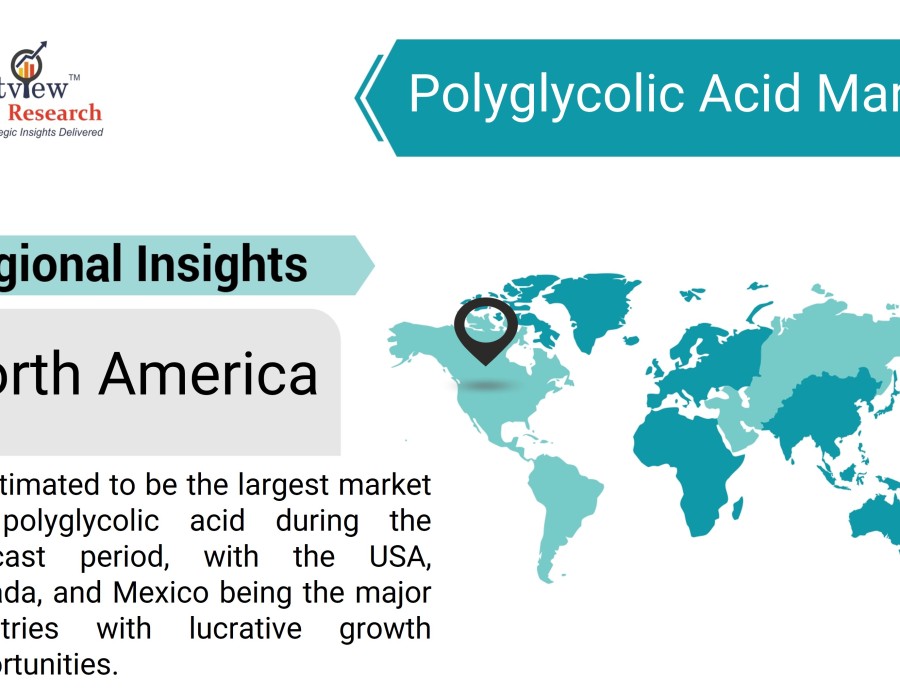Polyglycolic acid is a biodegradable, biocompatible polymer known for its excellent mechanical properties and rapid degradation profile. These characteristics make PGA an essential material in various medical and industrial applications. This article explores the diverse uses of polyglycolic acid in both sectors, highlighting its significance and impact.
According to Stratview Research, the polyglycolic acid market was estimated at USD 5.13 billion in 2022 and is likely to grow at a CAGR of 9.5% during 2023-2028 to reach USD 8.88 billion in 2028.
Medical Applications
Surgical Sutures: Polyglycolic acid's primary medical application is in the production of absorbable surgical sutures. Polyglycolic acid sutures offer excellent tensile strength, knot security, and predictable absorption rates, making them ideal for wound closure. They degrade within the body through hydrolysis, eliminating the need for suture removal and reducing the risk of infection.
Tissue Engineering: Polyglycolic acid is widely used in tissue engineering due to its biocompatibility and degradability. It serves as a scaffold material, providing a temporary structure that supports cell attachment and growth. Over time, the scaffold degrades, leaving behind newly formed tissue. This application is particularly significant in regenerative medicine, where polyglycolic acid-based scaffolds aid in the repair and regeneration of damaged tissues.
Drug Delivery Systems: The use of polyglycolic acid in drug delivery systems is another notable application. Polyglycolic acid can be fabricated into microspheres or nanoparticles that encapsulate drugs, allowing for controlled and sustained release. This method improves the efficacy of drug therapies by maintaining therapeutic levels of the drug in the body over an extended period. It is particularly beneficial in cancer treatment and chronic disease management.
Orthopedic Implants: Polyglycolic acid is utilized in the development of bioresorbable orthopedic implants, such as screws, pins, and plates. These implants provide temporary support to fractured bones and degrade naturally as the bone heals, eliminating the need for a second surgery to remove the hardware. This application reduces patient recovery time and minimizes complications associated with permanent implants.
Industrial Applications
Biodegradable Plastics: In the industrial sector, polyglycolic acid is gaining traction as a key component in the production of biodegradable plastics. polyglycolic acid-based plastics decompose more quickly than traditional plastics, making them an environmentally friendly alternative. These materials are used in packaging, agricultural films, and disposable products, contributing to the reduction of plastic waste.
Oil and Gas Industry: Polyglycolic acid is used in the oil and gas industry for applications such as temporary zonal isolation during well drilling and completion. Polyglycolic acid -based materials can be used to create plugs or barriers that degrade over time, ensuring that the wellbore environment returns to its natural state without requiring mechanical intervention for removal.
Textile Industry: The textile industry employs polyglycolic acid fibers in the production of biodegradable fabrics. These fabrics offer durability and strength while being environmentally friendly. Polyglycolic acid textiles are used in various applications, including medical garments, agricultural textiles, and geotextiles.
Conclusion
Polyglycolic acid's unique properties make it a versatile and valuable material in both medical and industrial sectors. Its biocompatibility and biodegradability drive its use in surgical sutures, tissue engineering, drug delivery systems, and orthopedic implants in the medical field. In the industrial sector, polyglycolic acid contributes to sustainable solutions in biodegradable plastics, the oil and gas industry, and textiles. As research and development continue, the applications of polyglycolic acid are expected to expand, further highlighting its significance in advancing medical and industrial technologies.






Comments